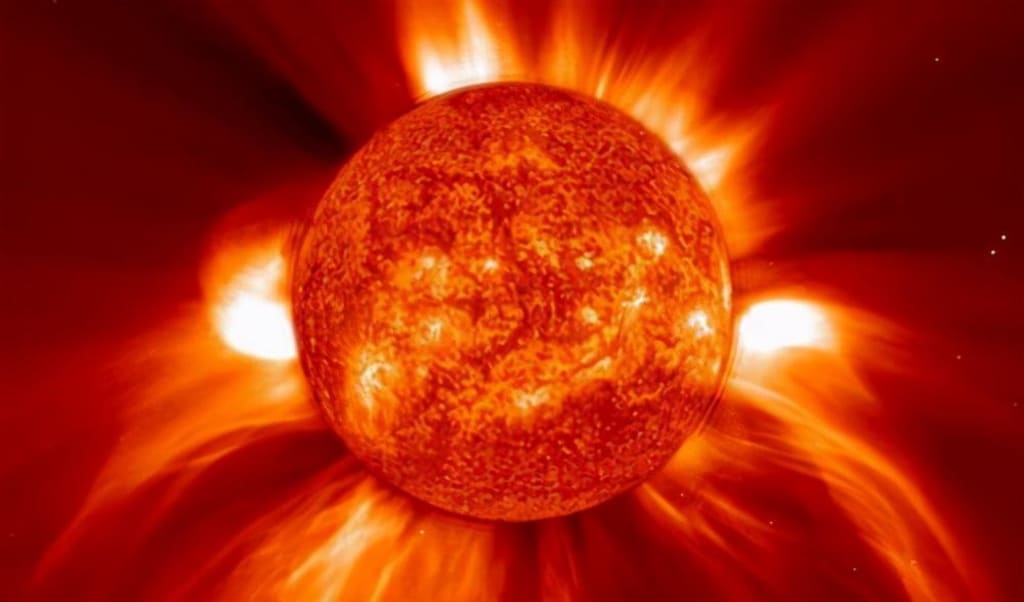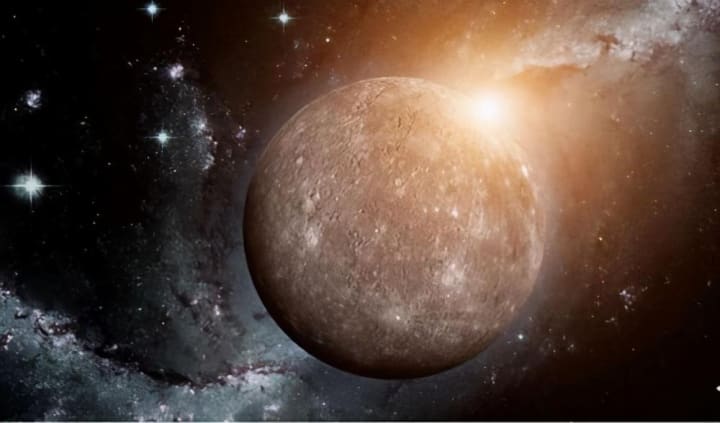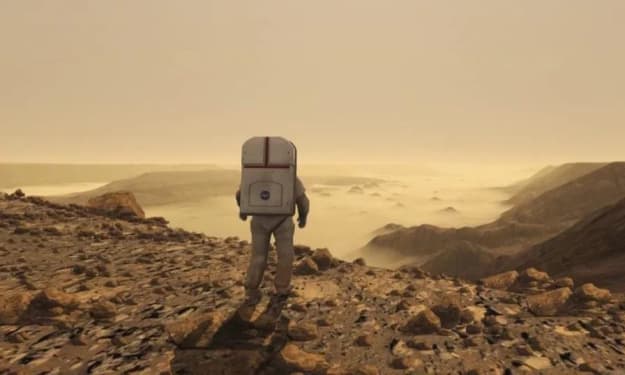Mercury's metal content is up to 70%, which could be mined by humans for a long time
Over the long years of evolution, the Earth has left enormous treasures for mankind

The development of civilization is inseparable from resources, and without the support of abundant resources, human science and technology could not have made great development. In a short span of more than 200 years, human beings were able to achieve a great leap in science and technology, which is closely related to the abundant metal resources on the earth.
As we all know, Mother Earth has left huge mineral deposits for mankind during the long evolutionary years. In the big universe, hydrogen occupies the main elemental position and its content is the largest, while the evolution of the universe, the formation of galaxies and planets, etc. all need the cooperation of various elements, especially the birth and evolution of life, but also need the richness of various elements.
The formation of heavy elements in the universe is not an easy task and is related to stars, where internal nuclear fusion reactions can transform hydrogen into helium, iron, etc. However, stars depend on internal nuclear fusion to transform, at best, to iron, and heavier elements require supernova explosions at the end of the star.
Supernova explosions can transform into more kinds of metal-heavy elements. The formation of the solar system was due to the supernova explosion that occurred at this location at that time, leading to the subsequent birth of the Sun and the formation of the eight planets, so we can see that the solar system is very rich in metal resources, and the Earth also has a large number of metal resources.
Metal resources are an important part of human technological development, and many of the various technological items that people need in their daily lives are inseparable from the support of metal mineral resources, and with the rapid development of human technology, the future demand for metal mineral resources will become greater and greater. Moreover, the resources on earth are limited, especially these metal elements, whose consumption is getting bigger and bigger.
If the metal resources on Earth are depleted, and human civilization wants to develop further, it must look to other planets in the solar system. And basically, they are rocky planets rich in metal elements, and the Earth around the Moon is also a rocky planet rich in metal elements, so the Moon will become an important resource mining base for humans in the future.
In addition to the Moon, four of the eight planets in the solar system are rocky planets, along with Mercury, Venus and Mars, and the Earth. As for Mars, I believe many of you know it well, it is the most explored and understood planet since mankind came out of the Earth.
Mars is a rocky planet that is naturally rich in metal resources, but Mars is more significant to humans and is likely to be a second home for them. Therefore, it is unlikely that humans will overexploit Mars' resources in the future to avoid serious damage to the Martian ecology.

Venus, as the planet of purgatory, has a surface temperature of 460 degrees Celsius and is also rich in metal resources. Finally, Mercury, which is similar to the moon in terms of mass and volume, is considered by many to be nothing special and does not require much time and effort to explore and study it. So is this the case?
Yes, Mercury is indeed comparable in size to the Moon in terms of its volume and also has many similarities, and it seems that not much has been done to explore it. But this is not the case, Mercury is the real metallic planet in our solar system.
It is well known that Mercury is the closest of the eight planets to the Sun, at a distance of 57.9 million kilometers from Earth. It is because it is very close to the sun, so those elements that are not strong on the surface are gradually stripped out, and what can be left behind are more dense metallic elements.
After preliminary exploration and research, scientists found that Mercury has 70% metal content, a veritable metal planet, and if we can develop the resources on Mercury, then humanity can survive for a long time. If we calculate according to the current human demand for metal elements, the metal footprint on Venus can be used by humans for 200 billion years.
Indeed, 200 billion years of use is only measured by the current level of human technology, and, with the rapid development of human technology, the demand for metal resources is also increasing, the metal on Mercury will not allow humans to use it for such a long time, even so, this larger metal planet, which is important for the development of human beings, can meet the huge demand for metals in the future.
Seeing this, perhaps friends will say, there are so many metal resources on Mercury, then humans should hurry to explore and try to develop Mercury's resources as soon as possible. The concept is very good, but it is not easy to do, I believe that many friends know, that human from Earth, has explored Venus and Mars, also towards the edge of the distant solar system to explore, but only Mercury has been explored once, this is why?
Theoretically, Mercury is not far from Earth, only 208 million kilometers away, if we launch a Mercury probe, it will not take long to reach. It took nearly seven years for the Mercury Messenger probe, launched on August 3, 2004, to reach Mercury's orbit.
In nearly seven years, the Messenger flew about 7.9 billion kilometers, so why did it travel so far with only 208 million kilometers? It has to do with Mercury's position, as we have said before, its average distance from the Sun is only 57.9 million kilometers, and at such a distance Mercury needs to rotate faster to stay around the Sun.
Mercury's rotation speed is detected to be about 48 kilometers per second, and such a fast rotation speed makes it very difficult for human probes to maintain such a speed. In addition, Mercury's mass is relatively small, only 5.6% of Earth's, and its small mass indicates that its gravitational force is also small.
In that case, a Mercury probe would need a closer orbital distance to orbit Mercury, and it would have to be close enough to Mercury. But if it is too close to Mercury, it is prone to the risk of crashing, and we also need the effect of the sun's gravity, and the closer the probe is to the sun, the faster it will fly under the effect of gravity so that it can easily lose control.
Therefore, the probe will not go too close to Mercury to enter its orbit better and safer, but it will take a longer distance and longer time to make a big circle, which requires a lot of detours. In this way, the probe can fine-tune its flight with the gravitational pull of the Sun, Earth, and Venus to keep it in better shape and approach Mercury gradually and slowly.
It is very difficult for the probe to approach Mercury's orbit, let alone to mine its metal resources. Therefore, Mercury is still only an audible but not edible delicacy for human beings, and it needs human technology to go further before it is possible to tap the rich resources on Mercury.
About the Creator
Wu Mu
Dreams are not limited, nothing can be achieved
Enjoyed the story? Support the Creator.
Subscribe for free to receive all their stories in your feed. You could also pledge your support or give them a one-off tip, letting them know you appreciate their work.






Comments
There are no comments for this story
Be the first to respond and start the conversation.